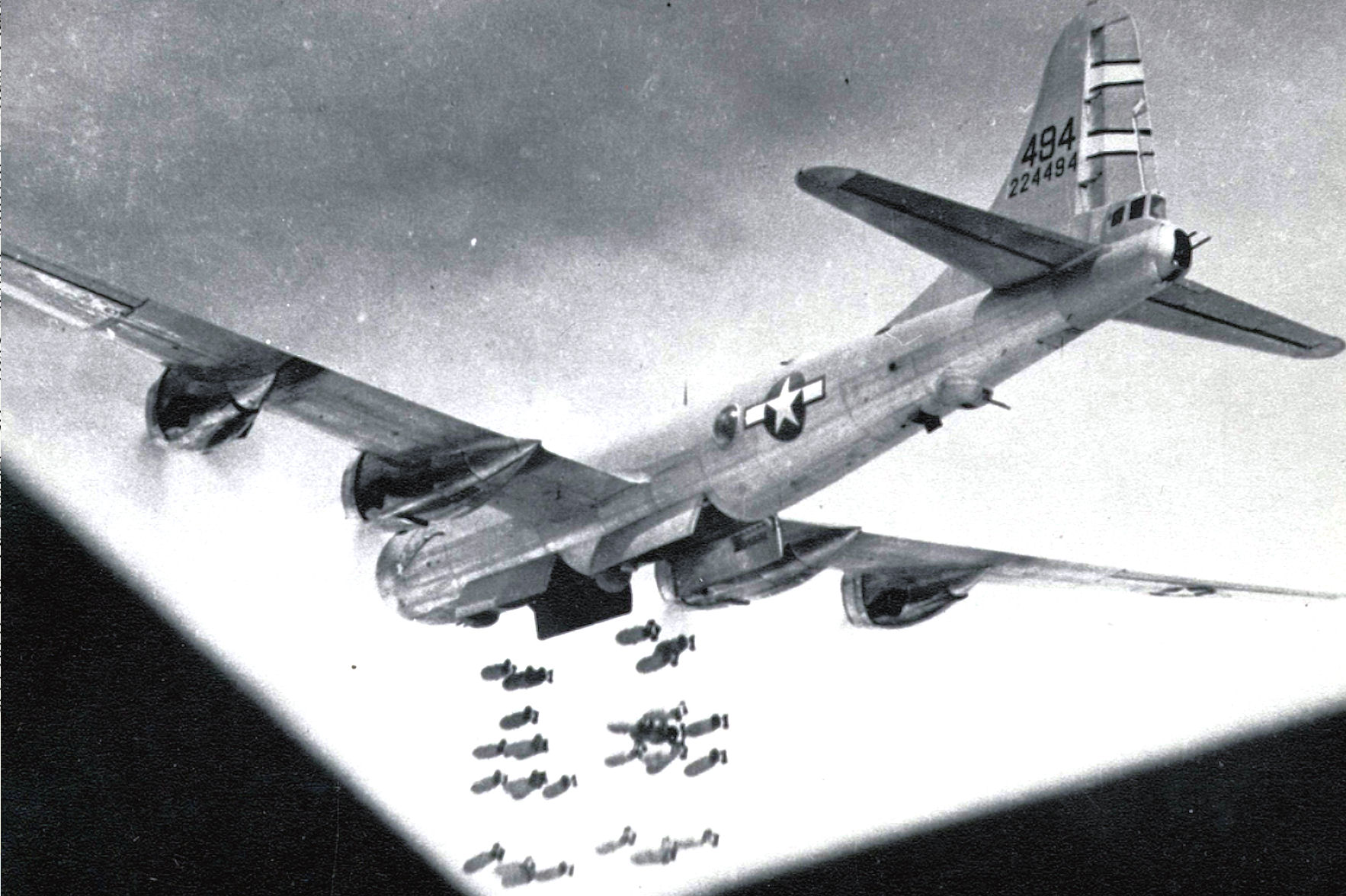On September 21, 1942, 74 years ago, the maiden flight of the Boeing B-29 “Superfortress” took place.
The plane was the successor of Boeing’s ultra-tough B-17 “Flying Fortress,” and the predecessor to the B-52 “Stratofortress,” which is still in use today.
The plane would become the long range, heavy bombing workhorse of the Pacific theater of World War II, where it achieved fame and infamy for dropping Atomic bombs on Hiroshima and Nagasaki.
Relive the legacy of this iconic bomber in the slides below.
The B-29 was very advanced for its time, featuring a pressurized cabin, tricycle dual-wheeled landing gear, and remote controlled gun turrets.

Only the front and back compartments were pressurized, meaning that the crew had to crawl over the bomb bay via a narrow 35-foot tunnel.

At the time, it was the heaviest production plane in the world, weighing in at 105,000 pounds with an optional 20,000 pounds of bombs.

In addition to bombs, the B-29 was armed with 12 remotely controlled .50 caliber Browning machine guns and a 20 millimeter cannon at the tail gun.

Here is rare color footage of a formation of B-29s dropping bombs.

And watch the .50 caliber Browning machine guns take out a Japanese Zero.

Famously, the Enola Gay bombed Hiroshima on August 6, 1945. Three days later, another B-29, the Bockscar, bombed Nagasaki.

After World War II, the B-29 went on to face jet-powered fighters in the Korean war.

Of about 4,000 B-29s produced, only one, the Fifi, remains airworthy. It is owned and maintained by is owned by the Commemorative Air Force, based at Addison, Texas.


